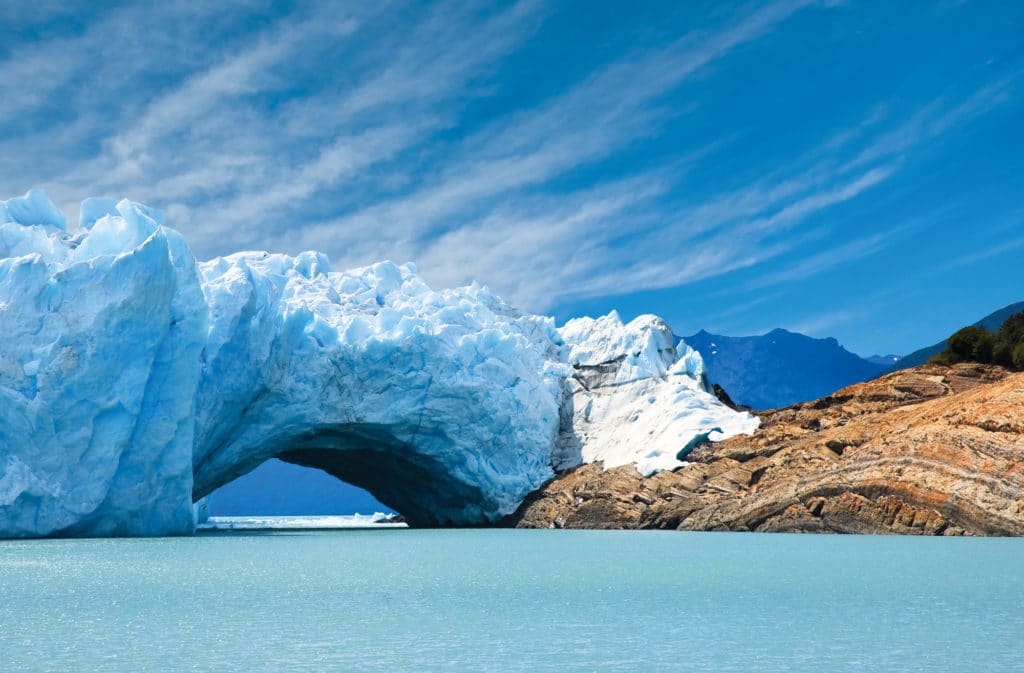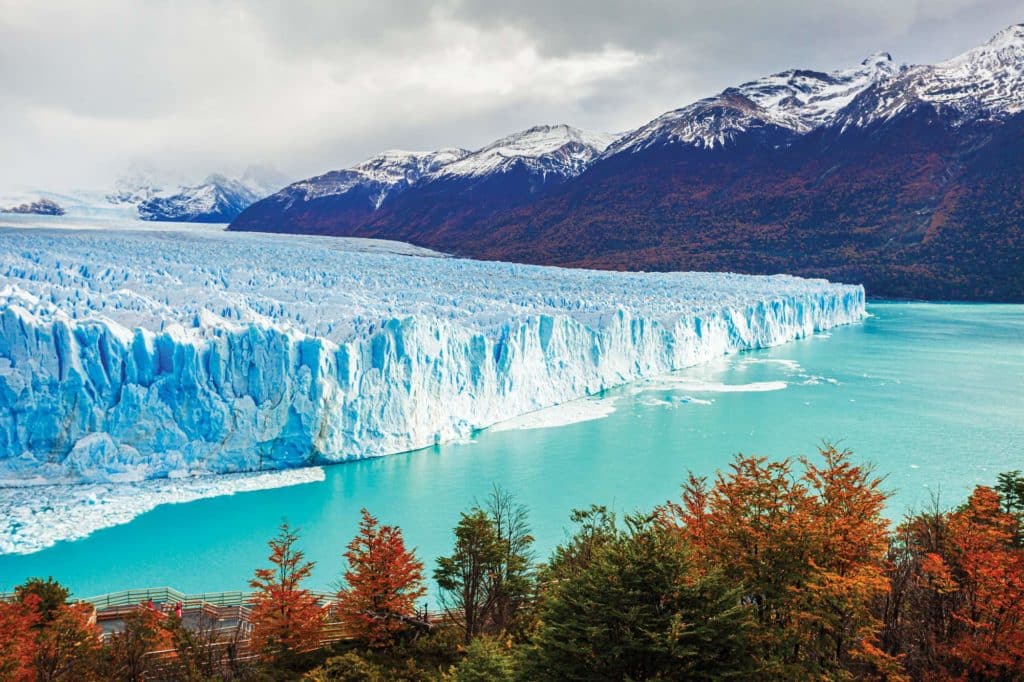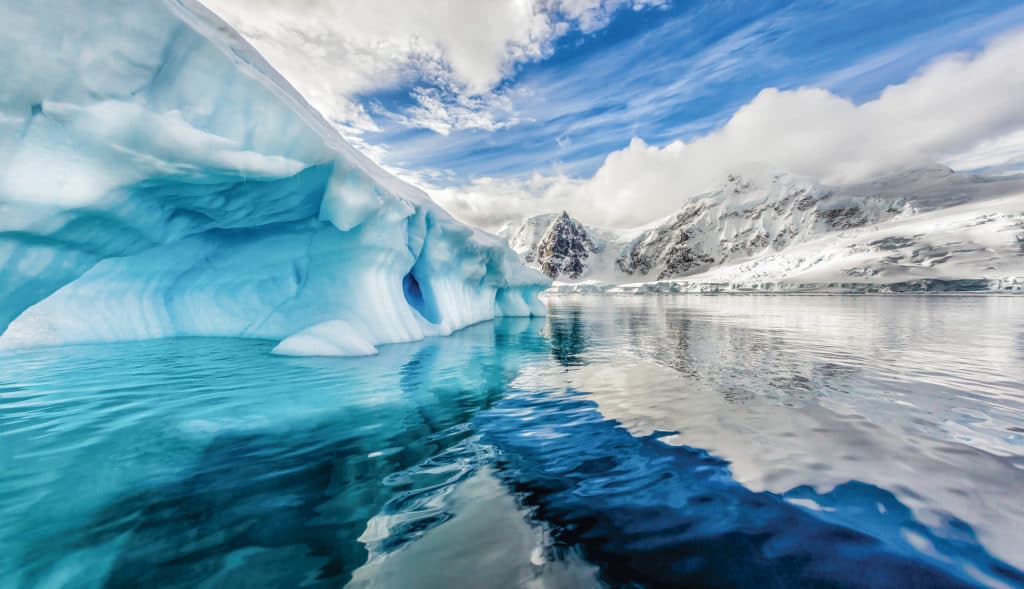
Recent years have seen an uptick in the number of yachts and adventurous cruisers plying high-latitude waters from Alaska to Antarctica. While stunningly beautiful and largely void of other yachts and people, these regions require different kinds of electronics than a cruise to the Caribbean or a transatlantic passage.
Here’s a look at some systems yachtsmen might want to consider when planning a high-latitude cruise.
FarSounder Argos 350
Icebergs and their broken-off bergy bits are some of the greatest dangers that high-latitude cruisers face. FarSounder’s Argos 350 forward-looking sonar (call for pricing) is designed to spot these dangers for yachts that are 60 to 130-plus feet length overall, providing 1,150 feet of range at 18 knots in open waters.
The system employs a multibeam transducer, a power module, cabling, a processor and proprietary software, and it can be installed during construction or refitting. Once networked, the system delivers imagery to the yacht’s Ethernet network, allowing the imagery to be viewed on compatible screens.
Argos 350 systems provide detailed bottom mapping at a range of up to eight times the water depth, and they can detect objects in the water column out to their maximum 1,150-foot range. The system collects and processes its sonar returns in three dimensions, allowing it to compensate for pitch and roll. Additionally, the system employs color coding to alert users of dense objects, and to indicate depth or signal strength (users can switch between views).
Should the system detect a threat, it delivers audible and/or visual warnings based on a user’s parameters.
To minimize threats even further, anyone operating near ice should dramatically cut the yacht’s speed. While the system delivers 1,150 feet of range at 18 knots, the reality is that at 18 knots, a yacht covers 1,150 feet in 38 seconds. At 5 knots, users have two minutes and 16 seconds of reaction time. Provided that prudent seamanship is exercised, an Argos 350 should allow a yacht to ply truly spectacular waters.

FLIR M364C
Adventure cruising requires sharp eyes, but human eyes simply can’t detect minute thermal differences between an object and its background. This is what FLIR’s thermal-imaging cameras are designed to do. FLIR’s recreational marine cameras range from $3,500 to $180,000, and the M364C ($20,500) is ideally suited to high-latitude cruising.
The gyrostabilized, dual-payload M364C can pan through 360 degrees and tilt through plus or minus 90 degrees. It has a high-definition, Sony-built daylight camera with a 30x optical zoom and 12x digital zoom. All up, this equates to a 360x zoom.
But it’s the unit’s thermal-imaging camera that’s best suited for detecting ice, other vessels and marine life. This camera has a FLIR-built Boson 640 thermal-imaging core that delivers 640-by-512-pixel image resolution, a 24-by-18-degree field of view and an 8x digital zoom.
Additionally, this camera sports FLIR’s Color Thermal Vision and Multispectral Dynamic Imaging (MSX) technologies. CTV blends imagery from the daylight and thermal-imaging cameras and overlays it with color to enhance object identification. MSX adds details that make faint edges look crisp. So the skipper can see, say, a distant bergy bit or a menacing polar bear.
BSB Marine Oscar
BSB Marine developed its Oscar collision-avoidance system for offshore sailors, and then it created Oscar Custom Power for motoryachts.
The optical-based system ($70,000) consists of a vision unit that is mounted aloft and a belowdecks central processing unit. The VU consists of three FLIR-built, 640-by-512 thermal-imaging cameras that deliver 123-degree horizontal and 32-degree vertical fields of view, as well as 3,040 feet of range. The CPU is a black-box computer that analyzes the cameras’ video streams to detect objects in near real time. The system also includes an app that delivers a visual reference and AIS-type information (such as speed and bearing) on the target, and that can reside on a personal computer, wireless device or multifunction display.
The CPU uses artificial intelligence to compare all detected objects with its stored database of 55 million-plus images (including icebergs viewed from myriad angles and in varied sea states). Oscar then automatically adjusts the yacht’s autopilot if it “sees” a navigational danger, and it can simultaneously evade several targets.
As with the other technologies discussed here, slower speeds buy operators more reaction time, which is key for negotiating ice-choked waters.
Furuno Ice Radar
If high-latitude aspirations involve wending through pack ice, then Furuno’s ice-detection radar is worth exploring. The system uses a Furuno X-band navigation radar ($11,000 to $40,000) and a FICE-100 module ($40,000). The FICE-100′s processor leverages the X-band radar’s raw data to create highly detailed composite radar imagery of the surrounding ice pack at a range of 3 to 6 nautical miles.
The FICE-100 concentrates its processing power on returns from the lower portion of the radar’s transmitted vertical beam, then lowers the signal’s noise floor. The resulting imagery captures fine details that would otherwise be lost. Moreover, the system creates its composite imagery using as many as 100 radar sweeps (older sweeps are usurped by newer ones), a process that can take four minutes and 16 seconds to build out initially. Furuno’s X-band radars operate at 24 rpm.
While the system was designed for commercial ships, it can be fitted aboard expedition-grade yachts that have the belowdecks space to accommodate the X-band radar’s dedicated display and the FICE-100. The system’s digital-video-cable outputs allow users to look at navigational radar imagery on a networked Furuno multifunction display and at ice-detecting imagery on the dedicated display.

Lars Thrane LT-3100S
VSAT antennas provide fast satellite communications, but they’re beholden to coverage maps that sometimes exclude the high latitudes. Global Maritime Distress and Safety System terminals provide a safety net via satellite by transmitting emergency signals—including the vessel’s name and location—to, and enabling two-way voice calls with, a terrestrially based Rescue Coordination Center.
Lars Thrane’s LT-3100S terminal (call for pricing) operates on Iridium’s network of 66 cross-linked low-Earth-orbit satellites. The system leverages Iridium’s Short Burst Data messaging service to transmit small, low-bandwidth data packets while providing a dedicated voice channel. For mariners, this means global access to text messages, email, GRIB weather files, official maritime safety information, and emergency and nonemergency voice calls.
While the LT-3100S delivers significantly slower data-transfer rates than VSAT (read: no Zoom meetings), it’s fast enough to let users make affordable nonemergency voice calls and send and receive critical information. Better still, users can access itinerary-specific information from Iridium’s global partner network (things such as ice-pack reports from Iridium’s Russian partners) or—should troubles arise—transmit a distress signal and call an RCC.
Garmin InReach
For yachtsmen who want to send two-way emergency communications and nonemergency text communications, share a location, and get marine-weather updates—but who don’t want the complication of a GMDSS terminal—Garmin’s InReach satellite communicators ($350 to $650) could be the ticket. While InReach doesn’t offer the same capabilities as a GMDSS terminal, these pocket-size devices work globally via Iridium’s satellite network with an airtime subscription, and they allow users to post messages to social media platforms. The InReach devices also can be paired with smartphones, and friends and family can ping an InReach device for its location information.
Furuno SCX-20/SCX-21
Magnetic compasses have guided mariners for centuries, but as the devices approach the Earth’s magnetic poles, their magnetic declination increases, making them unusable. Alternatively, satellite compasses harness satellite signals to determine heading information.
Furuno’s NMEA 2000-certified SCX-20 and NMEA 0183-compatible SCX-21 (each $1,200) have four global-navigation-satellite-system antennas that allow the compasses to generate highly accurate heading, pitch, roll and heave data, even in heavy seas or when the compasses can only receive GNSS information from a single satellite (say, because of signal blockage from a mountain or an iceberg). These compasses can share the information with networked instruments and systems such as autopilots, chart plotters and radars using their NMEA 0183/2000 connectivity.
EPIRBs and PLBs with Return Link Service
Vessel-registered EPIRBs and individually registered personal locator beacons have saved countless lives, but historically, distressed mariners couldn’t be sure their emergency signals reached the rescuing authorities.
Next-generation devices allow COSPAS-SARSAT to send a Return Link Service confirmation to the beacon. While the Return Link Service is operational, EPIRBs and PLBs enabled with the technology aren’t yet widely available; yachtsmen can find them in the United Kingdom, France, Greenland, Iceland, the Faroe Islands and Norway.









